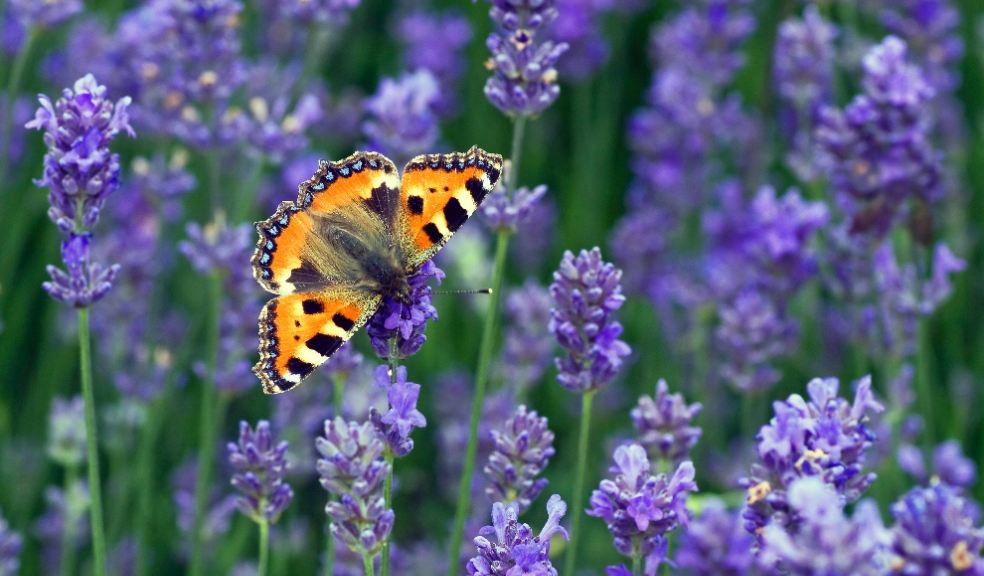
TV gardener Alan Titchmarsh calls on people to create a Pit Stop for Pollinators
TV gardener Alan Titchmarsh calls on people to create a Pit Stop for Pollinators this spring, providing butterflies and moths with the plants they need for survival.
Wildlife is in crisis – 76% of butterflies in the UK have declined since 1976 – which is why Butterfly Conservation has joined forces with TV gardener Alan Titchmarsh to encourage people to create pit stops for pollinators this spring, and help insects get from one area of habitat to the next.
Pit stops of all sizes are needed, which means everyone can get involved, no matter how large or small the space they have available is. Even a small plant pot on a doorstep or balcony could help provide butterflies and moths with an important foodplant or nectar.
Whether you live in a city or village, everyone can contribute to support our vital pollinating insects, and have butterflies and moths in your garden day and night.
Alan Titchmarsh, who is Vice-president of wildlife charity Butterfly Conservation, says: “By providing a pit stop for pollinators, you will be doing your bit for the insects that allow us to survive. Without them, we are gone. Plants aren’t pollinated and crops don’t grow. We need pollinators and we need to look after the planet for them.
“A really good pit stop for pollinators will have open flowers, which are needed for adult butterflies and moths to feed on, and also some plants on which butterflies and moths can lay their eggs, and for caterpillars to feed on. Something as simple as a bunch of nettles in a sunny corner is one good way to provide this.”
Sarah Hancocks, Marketing Projects Manager of Vivara, official partner of the Pit Stops for Pollinators campaign, said: “Back gardens can provide essential pit stops for insects. Whatever space you have, make it inviting to wildlife whilst enjoying doing your bit to help nature thrive on your doorstep. We’ve developed a range of new wildlife borders designed to help you give a corner of your green space back to wildlife, and even have one specifically to encourage butterflies. It includes an array of butterfly-friendly plants including Black-Eyed Susan, Lavender Hidcote, White Coneflower, Garden Catmint, Verbena bonariensis and White Dwarf Buddleja.”
What to plant for an insect-friendly garden:
Nasturtiums provide a foodplant for the caterpillars of both the Large and Small White butterfly.
Pot Marigold will provide nectar for adult butterflies
Buddleia is known as the ‘butterfly bush’ for a reason! The long purple or white flower heads are very attractive nectar sources for butterflies like Peacock and Small Tortoiseshell.
Verbena bonariensis is an excellent alternative if you don’t have space for a large Buddleia. It sends up tough, thin stems topped with masses of purple flowers that are a magnet for insects. It also seeds itself, so you will see it popping up in new places around your garden year after year.
Lavender ‘Hidcote’ is regarded as one of the best lavenders for the British climate. Butterflies and moths with shorter tongues can access the nectar inside its small flowers. A good plant for pots in sunny places as it prefers dry conditions.
Ox-eye Daisy is the UK’s largest-flowered native daisy with beautiful white petals and a yellow centre that is very inviting to butterflies. It will enthusiastically self-seed.
Viburnum davidii is a great shrub for a variety of situations in the garden. It can be grown in full sun or in partial shade. The white, shallow flowers come out in May and will be visited by smaller butterflies and moths, as well as short-tongued bees and hoverflies.
Field Scabious is a herbaceous perennial with blue-violet flowers that attract a large number of pollinators. Likes full sun but tolerates partial shade.
Honeysuckle is a plant that will twine through a tree but needs some support to grow up a fence. This native climber is an attractive and sweet-scented night-time source of nectar through the summer months for Privet and Elephant Hawk-moths. It is also a foodplant for Early Grey and Twenty-plume moth caterpillars.
For more of Alan’s top tips for creating a pit stop for pollinators, you can download a free guide, at www.butterfly-conservation.org.











